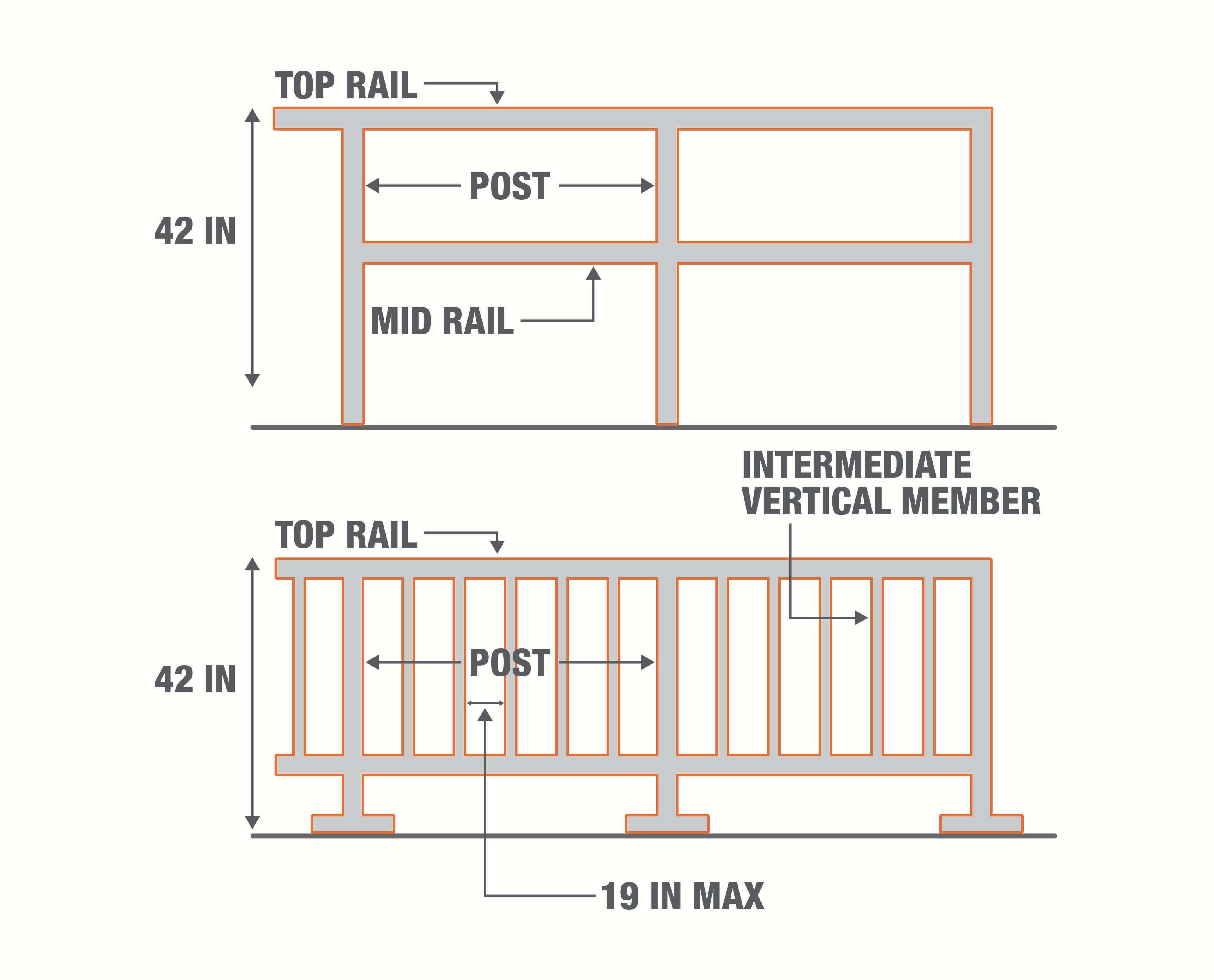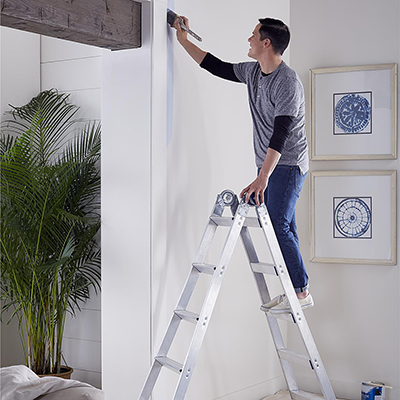Types of Window Washing Lifts

Published April 22, 2025
Professional window washers need to weigh several factors when choosing equipment to access windows on mid-rise and high-rise buildings. Window washing platforms safely provide the elevation cleaners need to remove stains, dirt and debris from the exteriors of commercial and industrial buildings.
This guide reviews the different types of window cleaning lifts and how to rent the best ones for your job.
Table of Contents
What Is a Window Washing Lift?
Window Washing Lift Considerations
Safety Features of Window Cleaning Lifts
Tips for Commercial Window Cleaning
More Tools. More Products. More Perks.
What Is a Window Washing Lift?

For buildings of more than two floors, professional cleaners need a means of elevation to wash windows beyond the reach of a telescopic pole.
Ladders can elevate window washers to 30 feet or more, but safety becomes a concern the higher they go.
Window cleaning lifts are aerial platforms with a reach often equal to the height of a mid-rise building. There are several types of aerial platforms.
- Boom lifts are aerial platforms consisting of a hydraulic arm connected to a platform or bucket with a grounded, movable base on wheels or tracks. They can move both vertically and horizontally and some have a reach of well over 100 feet.
- Cherry pickers are a type of boom lift with the hydraulic arm attached to a base that must be mounted onto a truck or trailer.
- Scissor lifts, also called mobile scaffolds, are self-propelled aerial platforms that can only provide vertical reach. They have wider platforms with higher load-bearing capacity compared to boom lifts but lack the combination of vertical and horizontal reach.
The other major types are suspended window washing platforms. These are horizontal platforms or scaffolds suspended by an overhead support system, usually located on the roof of a building. They are equipped with guardrail systems and safety harnesses.
There are several types of suspended cleaning platforms:
- Bosun’s chairs are harnesses designed with seating for a single window cleaner, suspended from ropes by a roof descent system.
- Suspended scaffolds are wide platforms, often held by ropes on either end. Suspended scaffolds can have many different types of roof descent systems and are recommended for window washers working on the exteriors of the tallest buildings, such as skyscrapers.
Suspended scaffolds can be less expensive than aerial lifts but require special training and extreme caution to use.
All window cleaning platforms need to support at least one washer as well as common window cleaning tools such as buckets and squeegees. Windows with special cleaning requirements may need specialty tools or products and you may need a platform with a higher load capacity.
Pro Tip: For more on renting the different types of aerial lifts, see our guide “Boom Lifts vs. Cherry Pickers.”
Window Washing Lift Considerations

When renting window cleaning lift platforms for commercial buildings, be sure to select the right equipment based on the specifics of the job.
The height of the building determines the type of lift you choose. The following are common classifications of buildings by height:
- Low-rise buildings are 1-4 stories.
- Mid-rise buildings are 5-9 stories.
- High-rise buildings are 10 stories and up.
For shorter buildings, consider scissor lift rental for wider, highly stable platforms with higher load capacity than other lifts. They are also best suited for jobs that need two cleaners working at once.
For mid-rise buildings, consider boom lift rental for equipment with a greater reach. Boom lift buckets usually allow only one worker at a time. Some telescoping boom lifts have a reach of more than 180 feet, but professional window washers rarely use lifts that reach more than 80 feet.
High-rise buildings require suspended cleaning platforms. Suspended scaffolds are often the only option for taller buildings but require highly trained workers for safe operation.
The terrain of a low or mid-rise building can also influence the choice of lift.
- Low-rise buildings surrounded by flat pavement can use scissor lifts.
- Low-rise or shorter mid-rise buildings with unpaved, flat terrain may need boom lifts. Spider lifts are a type of boom lift that have four legs, or outriggers, to provide greater stability.
- Buildings surrounded by uneven terrain should use suspended platforms.
Some buildings have tall glass lobbies or atriums that need cleaning both inside and out. Before renting a lift for interior use, make sure the building has doors that can accommodate it and that the lift’s weight will not damage the flooring.
Pro Tip: Make sure the lift can extend past the height of the building’s highest windows, so you do not have to overextend your reach. Extending poles are not recommended for washing windows while on an elevated lift
Safety Features of Window Cleaning Lifts

Window washers should observe safe practices when renting aerial lifts. The following are safety recommendations from the National Institute of Occupational Safety and Health (NIOSH).
Before using the window cleaning lift, follow these safety procedures.
- Make a safety check of the lift every day before use.
- At the site, look for potholes and other potential tipping hazards on the ground.
- Identify any overhead power lines, branches or other items that could be a hazardous for the worker.
- Do not schedule window cleaning on days with rain, snow, high winds or temperatures below freezing.
Follow these safety practices when using a window cleaning lift platform:
- Set brakes, outriggers and orange cones, even if the lift is on a flat surface.
- Close the platform’s protective gate, chain or bars.
- Wear a safety harness or other fall protection equipment attached to a designated anchor point.
- Stand on the floor of the platform or bucket. Do not lean over or climb on the guardrails.
- Do not exceed the window washing lift’s load limits.
- Do not drive a vehicle with the lift extended unless designed for that purpose.
Professional window cleaners should attain safety certification from the International Window Cleaners Association as well as complete OSHA 1910 safety training.
Pro Tip: Put down plywood to avoid damaging the ground where the lift will be parked for window washing.
Tips for Commercial Window Cleaning

The windows of commercial buildings can have different needs than residential windows. The following are tips for commercial window cleaning.
- Commercial building windows are usually tempered glass that has been tinted to reduce glare and provide UV protection. Find out the type of window and choose the appropriate cleaners and tools. Ammonia-based cleaners can damage window tinting.
- Plan to clean the sides of a building based on the time of day, washing windows in the shade whenever possible. Cleaning windows in direct sunlight can expose the worker to uncomfortable glare and dry the cleaning fluid too quickly, causing streaks.
- Buildings on streets with high traffic may need windows cleaned more frequently than ones with fewer cars.
- Use microfiber cloths instead of abrasive cloths or brushes that can leave scratches.
- Use a squeegee of at least 18 inches.
Pro Tip: If possible, avoid cleaning windows with tap water, which often contains trace amounts of minerals that can leave spots or other residue on the glass.
More Tools. More Products. More Perks.

Use our tool and large equipment rental services for access to heavy-duty equipment for construction jobs.




























